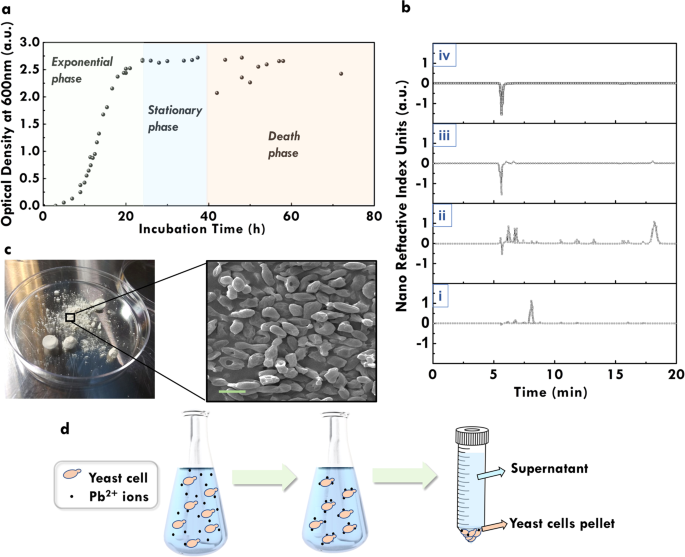2022-06-28 アメリカ合衆国・ニューヨーク州立大学ビンガムトン校

・ ニューヨーク州立大学ビンガムトン校が、微生物を利用した「プラグ・アンド・プレイ」型のバイオバッテリーを開発。
・ 微生物バッテリーをレゴブロックのように積み重ねることで、電気出力をセンサーやデバイスに合わせられ、数週間にわたってエネルギーを供給する。
・ 同大学では微生物間の相互作用で発電するバイオバッテリーの研究を長らく続けているが、遠隔地域での長期モニタリング等で不利となる、数時間に限られた電池寿命が課題。
・ 新バッテリーでは、3 種類の微生物を個別のチャンバー(3cm 四方)に格納し、微生物間の相互作用の最大化を試みた。上部の光合成微生物が生成する有機物を中間部の微生物がエサとして利用して電子輸送を向上させる化学物質を分泌し、底部の微生物が発電する。
・ IoT における最も挑戦的なアプリケーションは、無人の遠隔地域や過酷な環境でのワイヤレスセンサーネットワークの展開。作動停止時に従来型の電池交換が困難な電力系統から離れた場所にあるため、自律的なエネルギー供給が最も重要な要件となる。
・ 現行の 5G ネットワークは今後 10 年以内に 6G に移行することが予想され、AI の採用により、極小なプラットフォーム上に膨大な数の自律型・常時接続のスマートデバイスが登場する。これらの微細なデバイスに電力を供給する、小型のエネルギーハーベスターが不可欠となる。
・ 今後の研究では、過酷な環境下で受けたダメージを自己修復できる、浮体型のパッケージを開発する。最終的な目標は、必要な場所に散布して利用できる、「スマートダスト(砂の粒子サイズでセンサーと発電素子を備えたコンピューティング・センシングプラットフォームによるワイヤレスネットワーク)」の微生物 2~3 個による極微小なバッテリー。
・ 本研究は、米国海軍研究室(ONR)のグラント(51 万ドル)が支援した。
URL: https://www.binghamton.edu/news/story/3700/new-biobatteries-use-bacterial-interactions-to-generate-power-for-weeks
<NEDO海外技術情報より>
関連情報
Journal of Power Sources 掲載論文(アブストラクトのみ:全文は有料)
Plug-and-play modular biobatteries with microbial consortia
URL: https://www.sciencedirect.com/science/article/abs/pii/S0378775322004943?via%3Dihub
Highlights
- •We create a microfabricable and scalable biobattery that includes a microbial consortium.
- •A layer-by-layer biofabrication forms a thick, conductive, microbial consortium structure.
- •Multiple biobattery modules can be connected with a plug-and-play capability.
Abstract
Recently, a bacteria-powered biobattery containing multiple species demonstrated long-lasting and fully self-sustainable power generation through their synergistic interaction. Confining individual species in separate spaces avoids unbalanced competition between neighboring species, maximizing their cooperative interaction to extend battery life. Despite the vast potential and promise, however, a spatially engineered microbial consortium has never been sufficiently scaled in a systematic and controllable manner for immediate power applications. Moreover, the spatial organization of living microorganisms having their seamless and effective electrical coupling with the external electrode remains a significant challenge. In this work, we establish the groundwork for creating a microfabricable and scalable biobattery platform that allows control of a 3D multispecies microbial consortium. A layer-by-layer electropolymerization deposition of microbial-infused polymer solutions creates a vertically multi-layered, conductive, microbial structure where individual species are separately confined in quasi-solid-state polymer layers, ultimately providing effective coupling at the biotic-abiotic interface and efficient ionic environments for cross-feeding interactions between species. An integrated modular “plug-and-play” biobattery platform provides a simple and practical approach for its serial and parallel connections. By connecting multiple biobattery modules, an actual wireless telemetry system was successfully operated, ensuring the practical efficacy of this power supply for real-world wireless sensor network applications.



